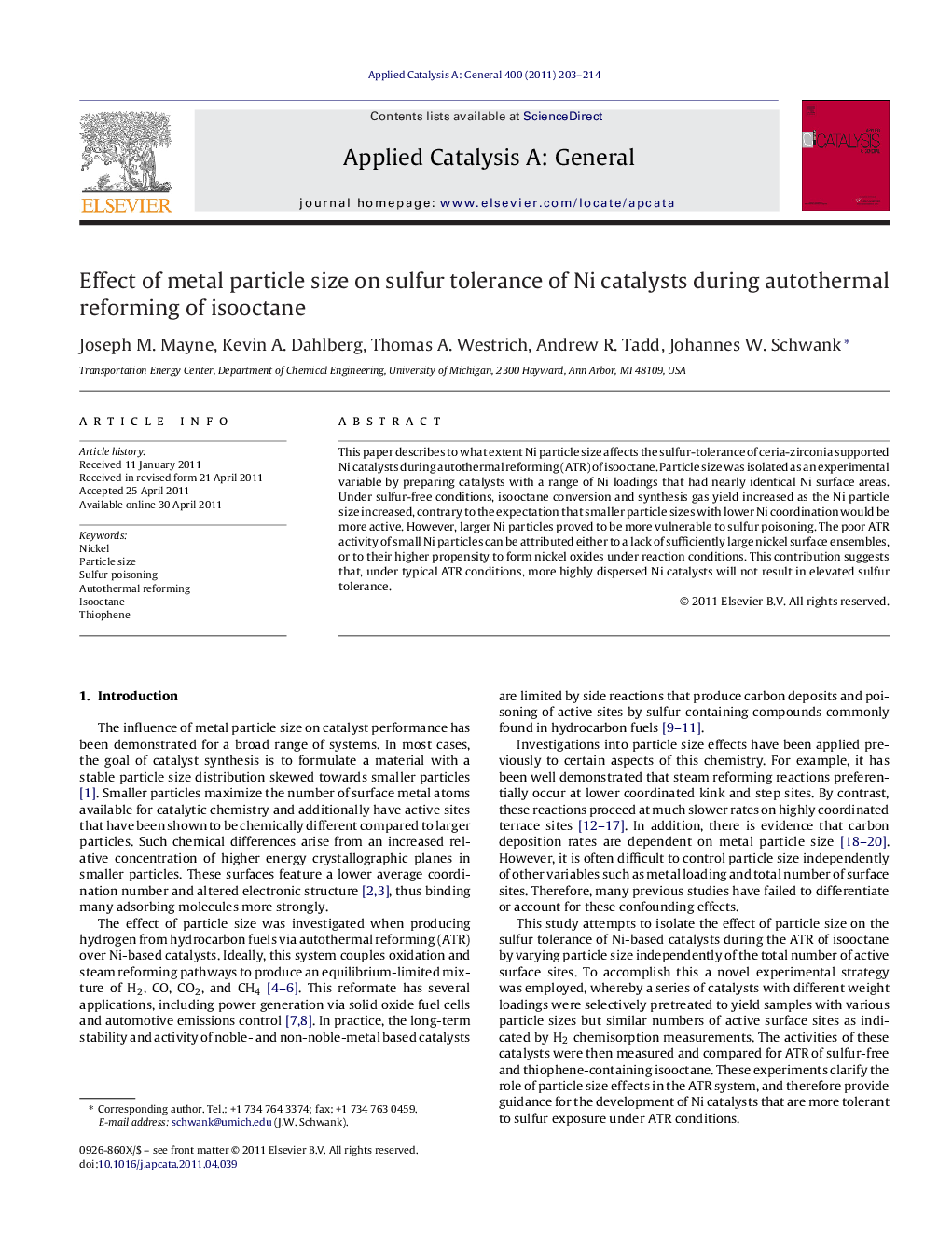| Article ID | Journal | Published Year | Pages | File Type |
|---|---|---|---|---|
| 41343 | Applied Catalysis A: General | 2011 | 12 Pages |
This paper describes to what extent Ni particle size affects the sulfur-tolerance of ceria-zirconia supported Ni catalysts during autothermal reforming (ATR) of isooctane. Particle size was isolated as an experimental variable by preparing catalysts with a range of Ni loadings that had nearly identical Ni surface areas. Under sulfur-free conditions, isooctane conversion and synthesis gas yield increased as the Ni particle size increased, contrary to the expectation that smaller particle sizes with lower Ni coordination would be more active. However, larger Ni particles proved to be more vulnerable to sulfur poisoning. The poor ATR activity of small Ni particles can be attributed either to a lack of sufficiently large nickel surface ensembles, or to their higher propensity to form nickel oxides under reaction conditions. This contribution suggests that, under typical ATR conditions, more highly dispersed Ni catalysts will not result in elevated sulfur tolerance.
Graphical abstractIsooctane reforming behavior was found to be dependent on the particle size of Ni. Smaller Ni particles were less active to H2 and CO production, however, larger Ni particles were more prone to deactivation under thiophene exposure.Figure optionsDownload full-size imageDownload high-quality image (138 K)Download as PowerPoint slideHighlights► Ni catalysts designed with equal surface area but different particle size. ► ATR activity exhibits size-dependence with respect to Ni catalysts. ► Small Ni particles show poor ATR activity. ► Large Ni particles are ATR active but susceptible to sulfur poisoning.
